America’s national parks tend to conjure up images of Yellowstone’s geysers or Yosemite’s granite cliffs — and as someone who’s spent the last five years living on the road, I totally get the appeal. Sure, these famous spots are worth visiting, but they often come with packed parking lots, long lines for campsites, and that familiar feeling that you’re following the same path as millions before you.
The good news? The US has 63 national parks scattered across the country, from the remote wilderness of Alaska to the underwater wonders of the Florida Keys. Each offers its own unique landscape and adventures, many still flying under the tourist radar. After exploring nearly all of them during my nomadic journey, I’ve put together a list of the 20 best national parks that deserve your attention — including both the classics and some hidden gems you might not have considered.
Yellowstone National Park, Wyoming
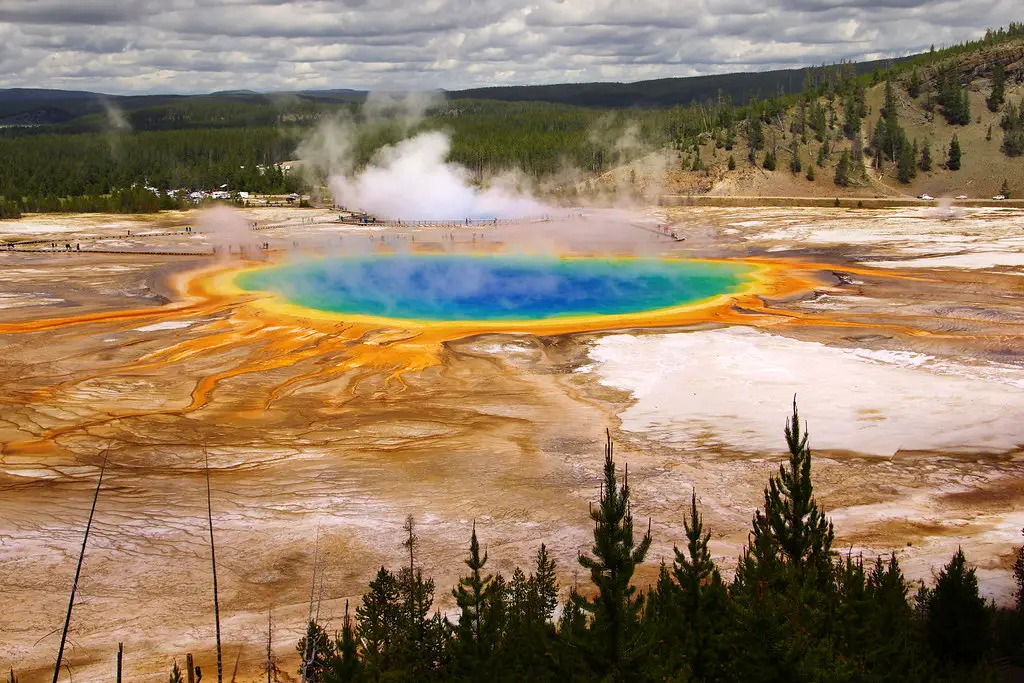
Of all the national parks I’ve explored in America, Yellowstone stands apart as nature’s most impressive laboratory. This 3,500-square-mile wonderland in Wyoming serves up a geology lesson come to life, with geysers shooting skyward, mud pots bubbling like witch’s cauldrons, and rainbow-colored hot springs that look almost too surreal to be natural. It’s not just about the geothermal shows – the park doubles as a wildlife sanctuary where grizzly bears lumber through meadows and bison herds roam freely across valleys. The park can get busy during peak summer months, but those who venture into its more remote corners are rewarded with peaceful moments among some of Earth’s most fascinating natural phenomena.
Yosemite National Park, California
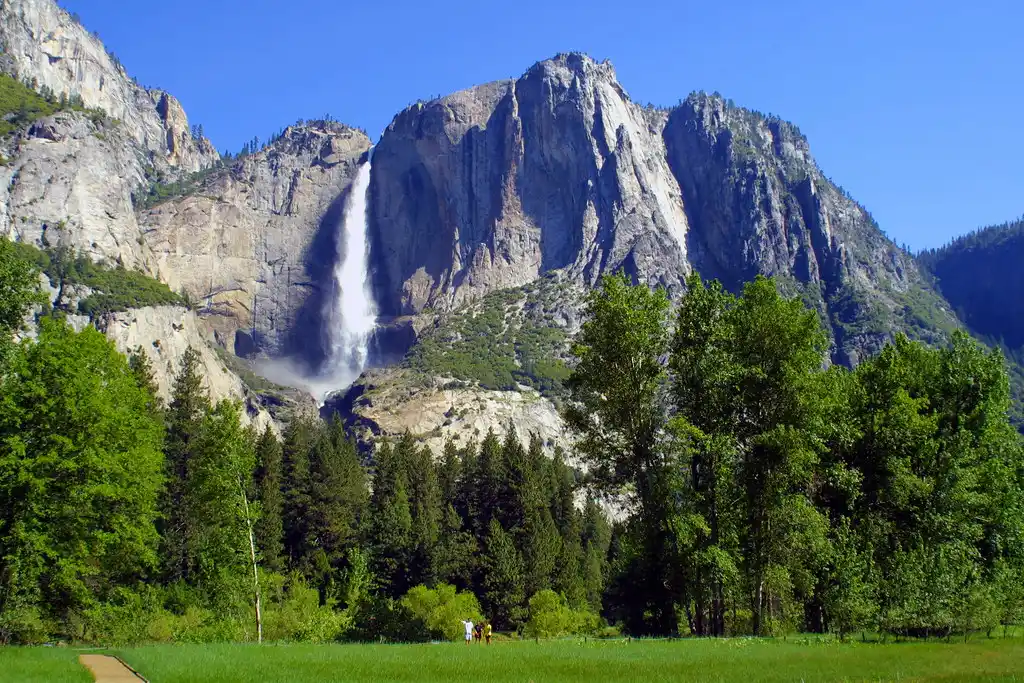
My first visit to Yosemite National Park was back in 2008, during a summer road trip through California. Nestled in the heart of the Sierra Nevada mountains, Yosemite stands as one of America’s most beloved natural treasures. Towering granite cliffs and ancient sequoia groves define the landscape here, while the iconic Half Dome and El Capitan peaks draw rock climbers from across the globe. The park’s pristine wilderness comes alive each spring when waterfalls like Yosemite Falls and Bridalveil Fall reach their peak flow, creating misty rainbows that dance through the valley. Whether you’re hiking through wildflower-dotted meadows or watching black bears forage in the distance, Yosemite offers a pure connection with nature that’s hard to find elsewhere in California.
Grand Canyon National Park, Arizona
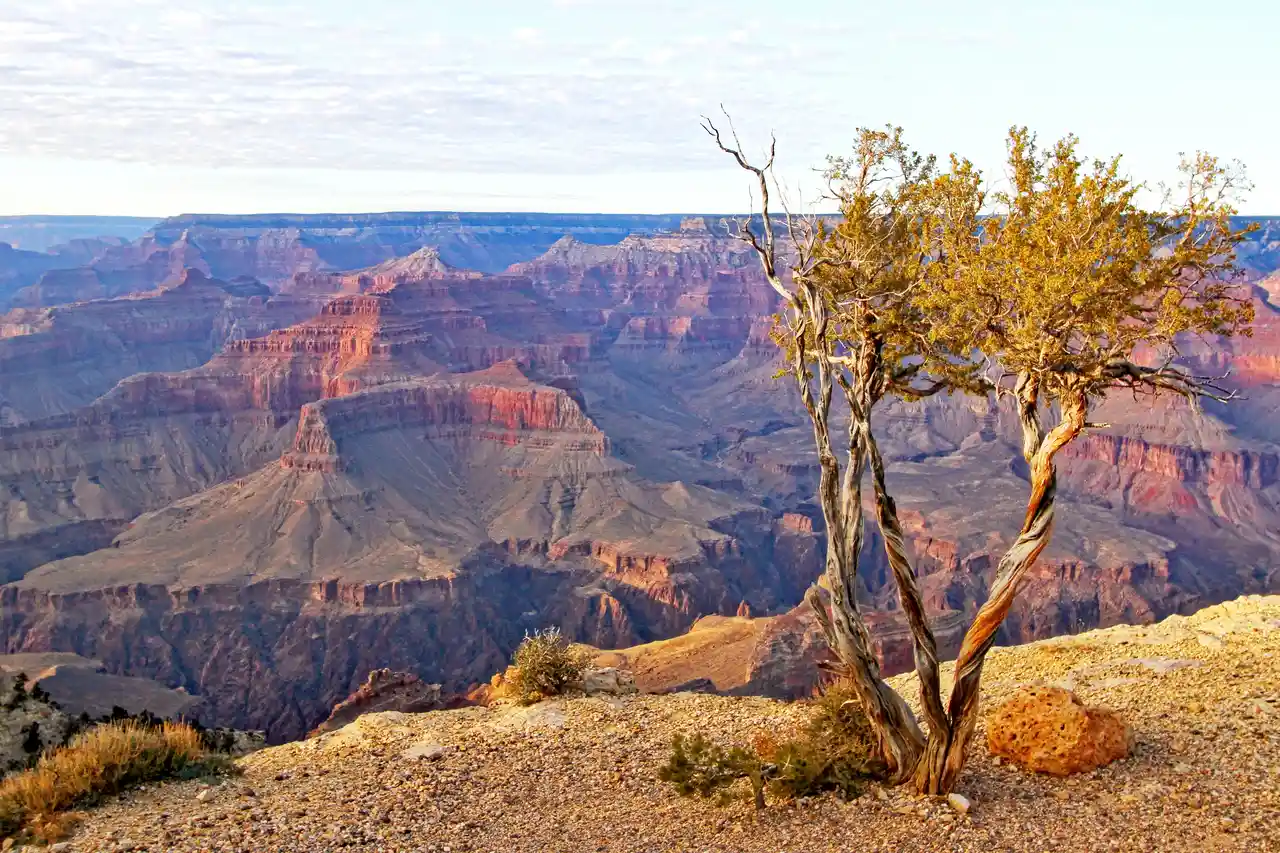
I first laid eyes on the Grand Canyon during a road trip through Arizona in the summer of 2015. One of the most recognizable natural wonders in North America, the canyon stretches an incredible 277 miles along the Colorado River, with layers of red and orange rock telling a billion-year story of Earth’s history. The South Rim draws most visitors with its collection of viewpoints and hiking trails, while the more remote North Rim offers a quieter experience among pine forests. At sunset, the fading light paints the canyon walls in soft golden hues, creating a natural show that makes it clear why this place has captured imaginations for generations. Whether you’re peering over the edge at Mather Point or trekking down into the canyon on the Bright Angel Trail, the sheer scale of the landscape reminds you just how small we are in comparison to nature’s greatest works.
Zion National Park, Utah
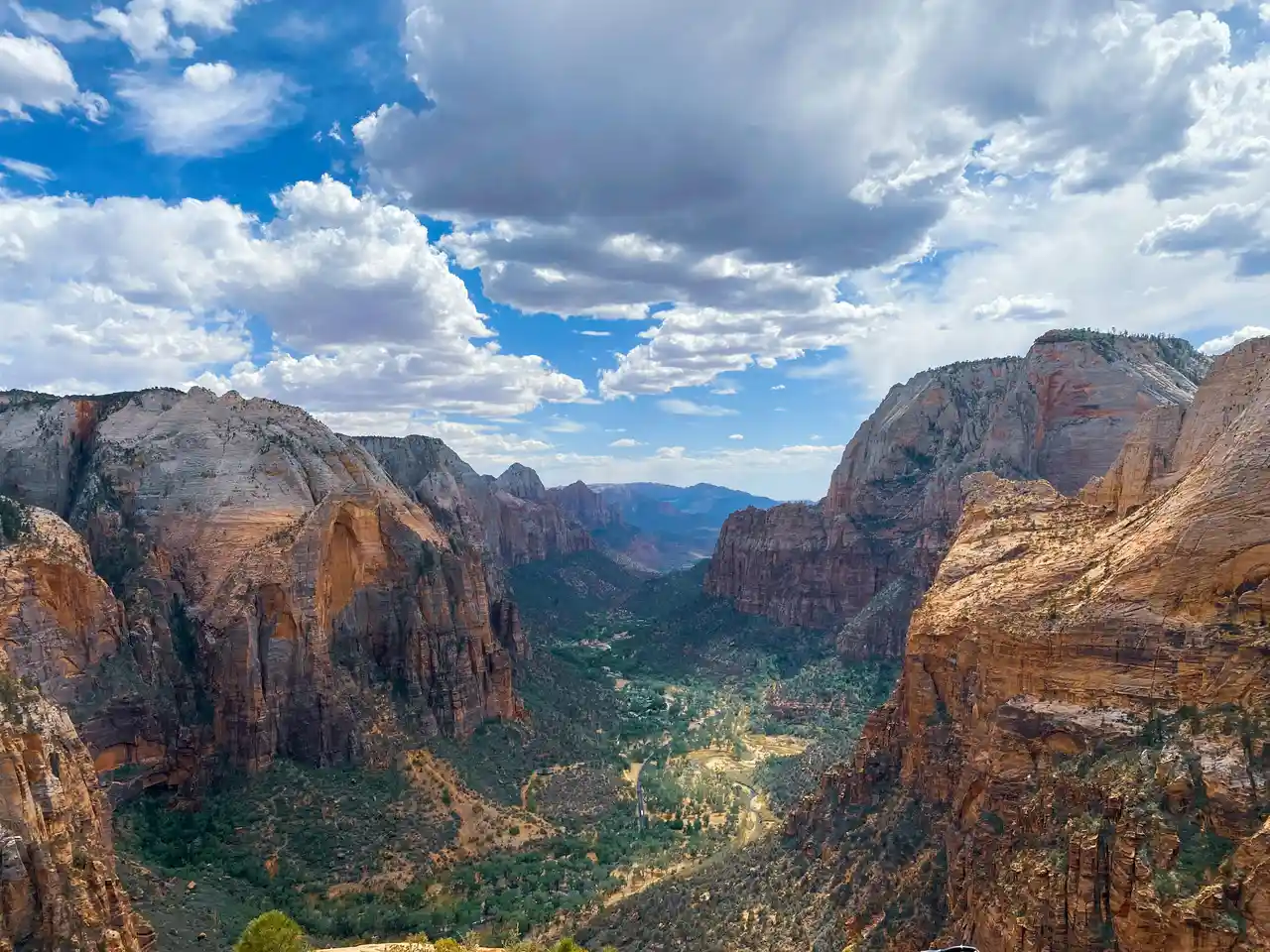
Explore massive red rock cliffs and winding canyons when you visit Zion National Park in southern Utah. The park’s famous Angels Landing trail leads you up 1,488 feet to jaw-dropping views of Zion Canyon, while the gentle Riverside Walk takes you along the Virgin River to the start of the narrow Narrows. For a unique adventure, wade through the knee-deep waters of the Narrows itself, where thousand-foot walls tower on both sides. Book a spot at the historic Zion Lodge to stay right in the heart of the park, surrounded by towering sandstone formations and abundant wildlife.
Glacier National Park, Montana
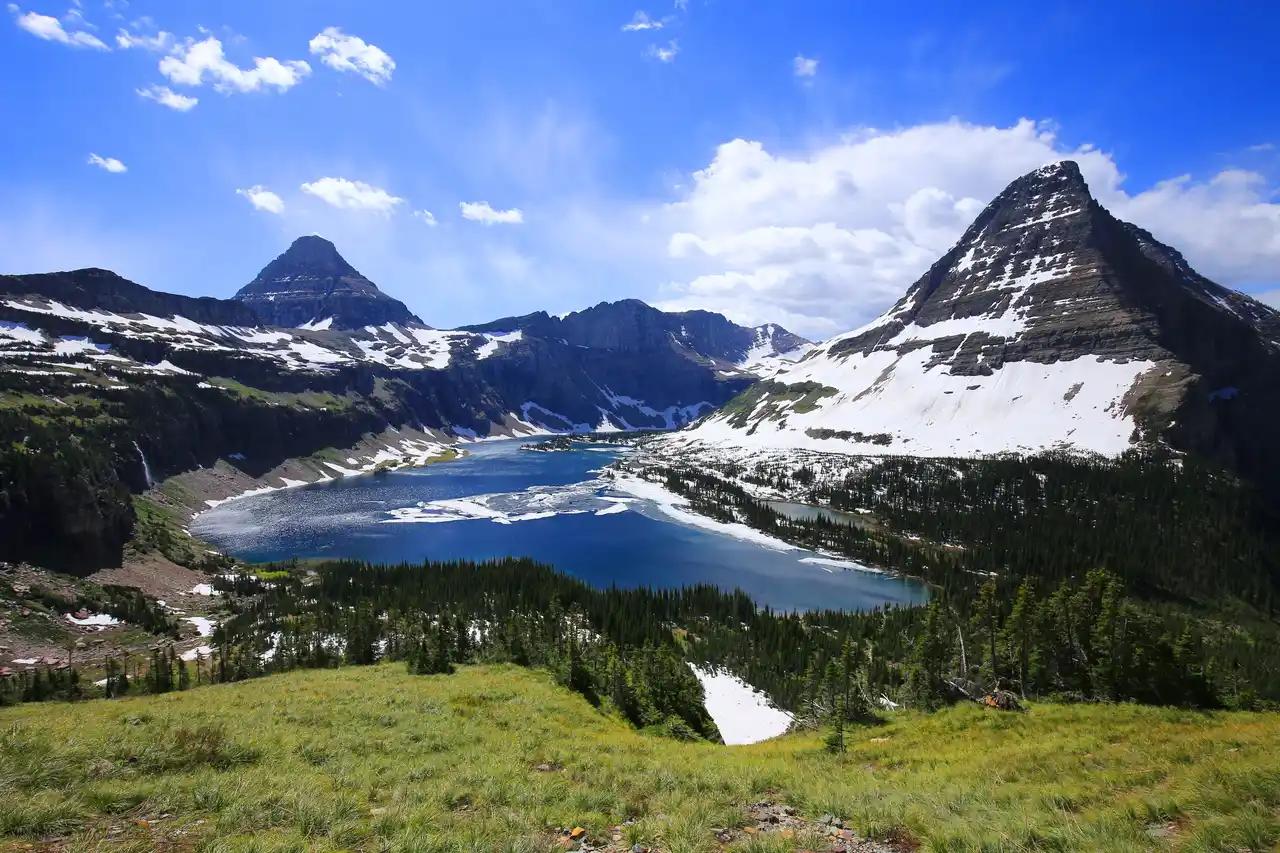
Travelers flock to Glacier National Park in Montana for the Going-to-the-Sun Road, a 50-mile scenic drive that winds through the park’s most impressive landscapes, but this natural wonder offers much more than just mountain views. The park houses over 700 miles of hiking trails that lead to hidden lakes, rushing waterfalls, and alpine meadows filled with wildflowers during summer months. While many visitors come to spot grizzly bears and mountain goats in their natural habitat, the park’s rapidly disappearing glaciers – now numbering fewer than 30 – serve as a powerful reminder of climate change. Whether you’re camping under star-filled skies or kayaking on Lake McDonald’s crystal-clear waters, Glacier National Park delivers an authentic wilderness experience that’s becoming increasingly rare in today’s world.
Rocky Mountain National Park, Colorado

Few places showcase the raw power of America’s wilderness quite like Rocky Mountain National Park in Colorado. This 265,000-acre paradise sits high in the Rockies, where more than 60 peaks tower above 12,000 feet and wildlife roams freely across alpine meadows and dense forests. The park’s famous Trail Ridge Road winds through the heart of the mountains, taking visitors from dense pine forests at 8,000 feet to barren tundra landscapes above 12,000 feet. It’s a challenging environment – the thin air and unpredictable weather demand respect – but those who venture here are treated to elk grazing in vast valleys, bighorn sheep scaling rocky cliffs, and some of the clearest night skies you’ll find in the country.
Acadia National Park, Maine
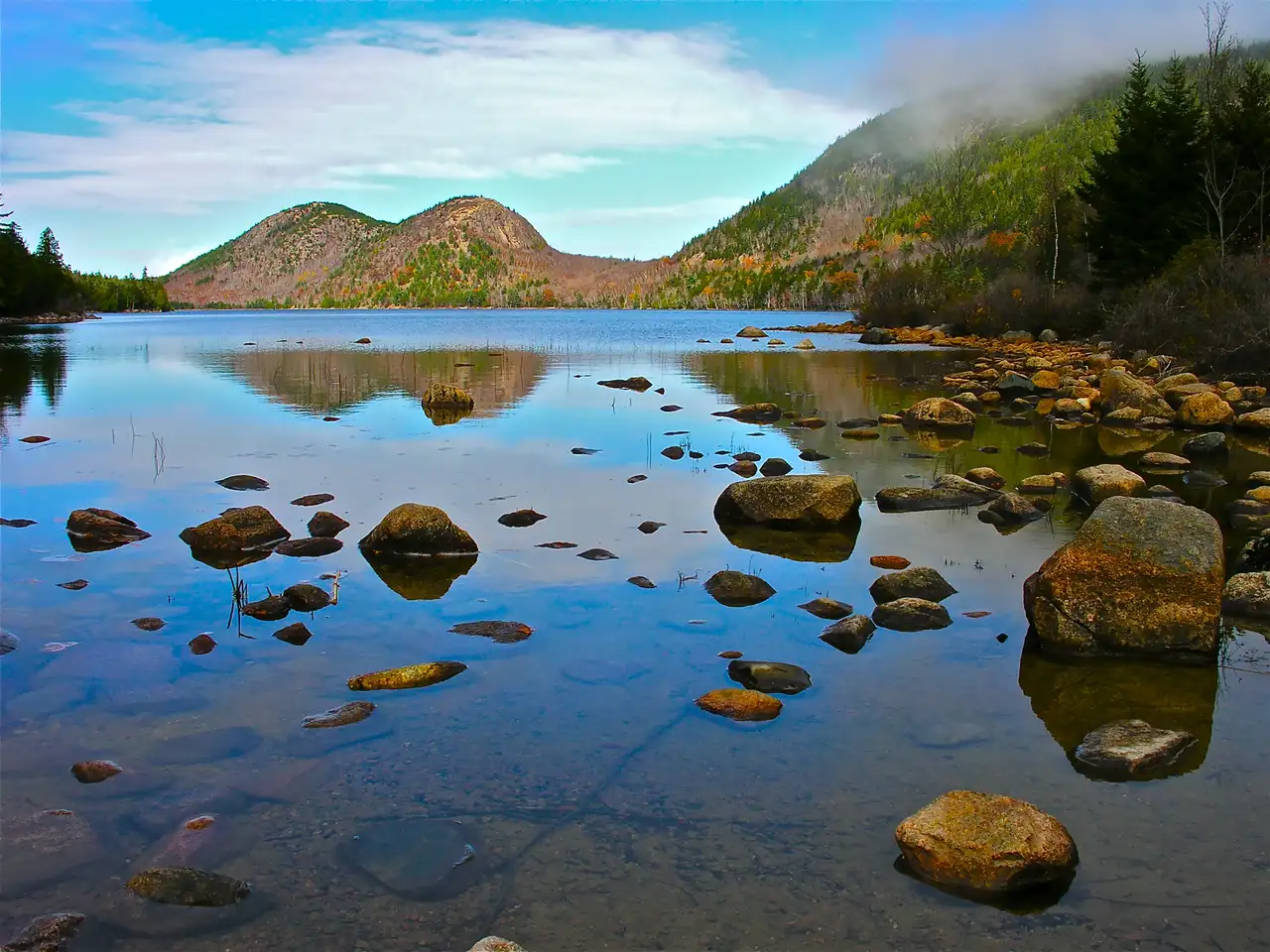
Ever stood on top of a granite peak as the first rays of sunlight hit the Atlantic Ocean? That’s just another morning at Acadia National Park, where the rugged Maine coastline meets dense forests and rocky mountains. The first national park east of the Mississippi River, Acadia serves up the kind of outdoor adventure that makes you forget about cell phones and emails. You can bike along historic carriage roads built by John D. Rockefeller Jr., spot whales from the top of Cadillac Mountain, or watch waves crash against Thunder Hole, a natural inlet that booms like its namesake. From June to October, the park comes alive with hikers exploring its 158 miles of trails, while winter transforms it into a playground for cross-country skiing and snowshoeing.
Joshua Tree National Park, California
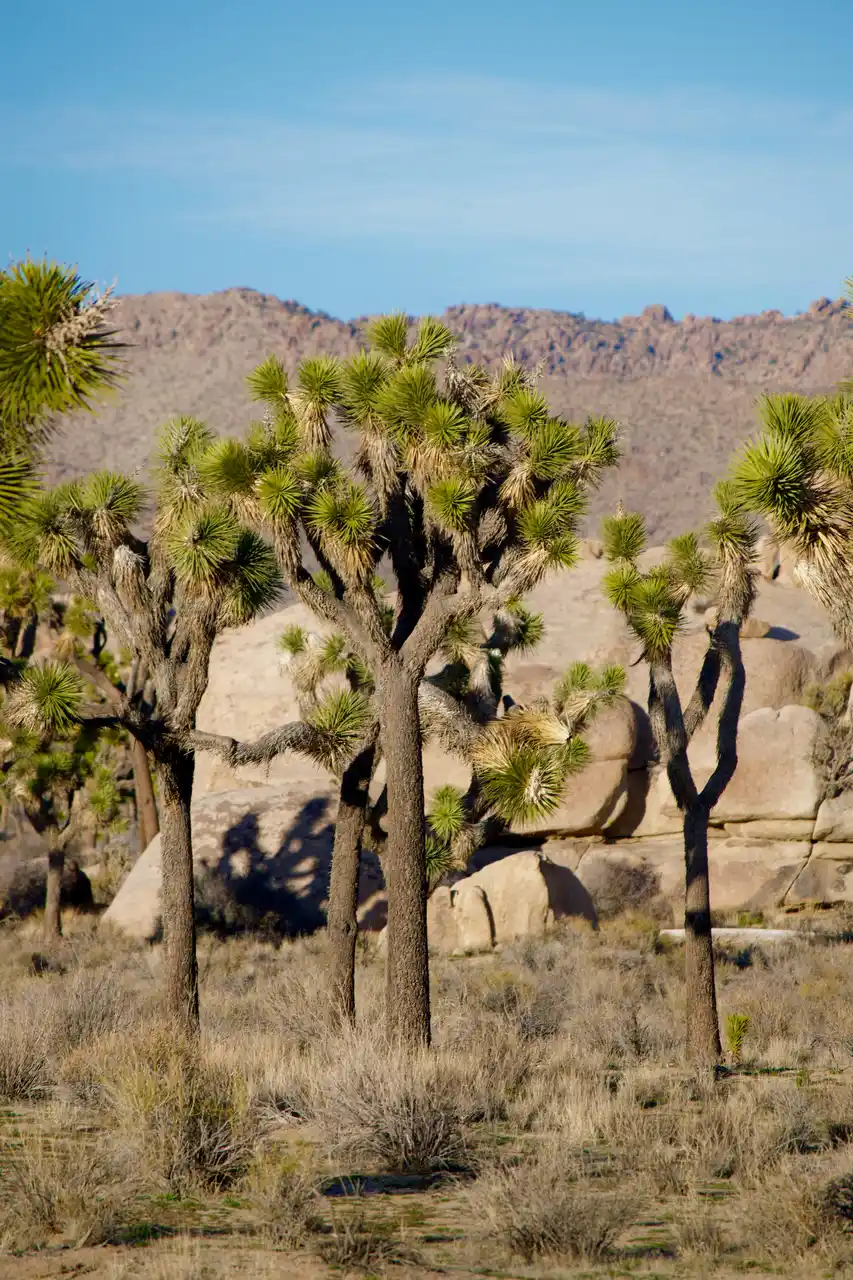
Have you ever seen a Joshua tree stretch its spiky arms toward the desert sky? These peculiar-looking plants dot the landscape of Joshua Tree National Park, where two distinct desert ecosystems meet in Southern California. A paradise for rock climbers and stargazers, this park transforms into a completely different world when the sun sets. During the day, you can scramble up massive granite boulders, spot desert bighorn sheep in Hidden Valley, or wander through a forest of the park’s namesake trees. When darkness falls, the park becomes one of the best spots in the country for stargazing, with the Milky Way stretching across the impossibly dark sky like a river of diamonds.
Death Valley National Park, California
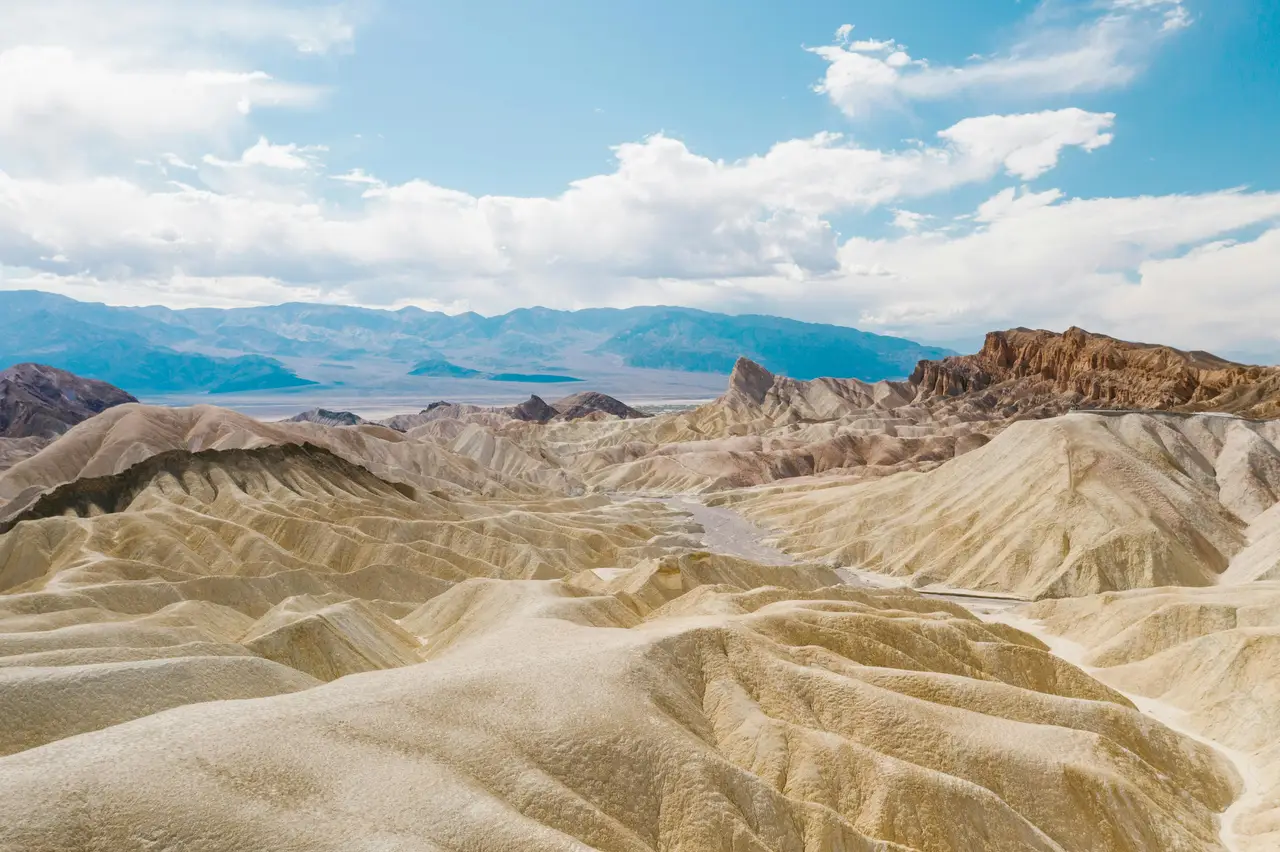
I first experienced Death Valley’s raw beauty on a spring road trip in 2019. Sitting between California’s Mojave Desert and the Great Basin, Death Valley holds the record as North America’s hottest and driest national park. Salt flats and towering sand dunes dominate the landscape here, alongside the rainbow-colored rock formations of Artists Palette. At 282 feet below sea level, Badwater Basin marks the lowest point in North America, while travelers can find relief from the heat at the historic Oasis at Death Valley resort. The park’s night skies put on an unforgettable show, with some of the clearest stargazing opportunities you’ll find in the country.
Great Smoky Mountains National Park, Tennessee
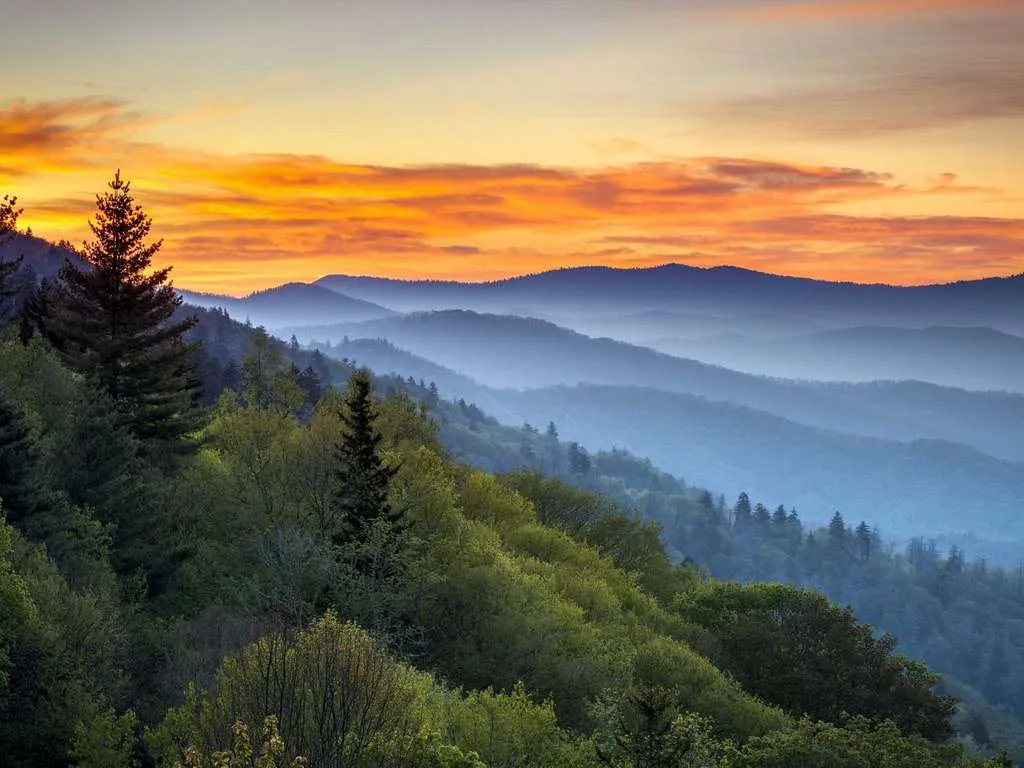
Have you ever seen black bears wandering through forests draped in morning mist? It’s an everyday scene in Great Smoky Mountains National Park, where the ancient Appalachian Mountains straddle Tennessee and North Carolina. The most visited national park in America, this misty wilderness offers 800 miles of hiking trails that wind through old-growth forests and past tumbling waterfalls. You can spot more than 1,500 flowering plants blooming throughout spring, cruise along the scenic Cades Cove loop to peek at historic log cabins, or climb to Clingmans Dome – the park’s highest point – for sweeping views across the rolling mountain ranges.
Olympic National Park, Washington
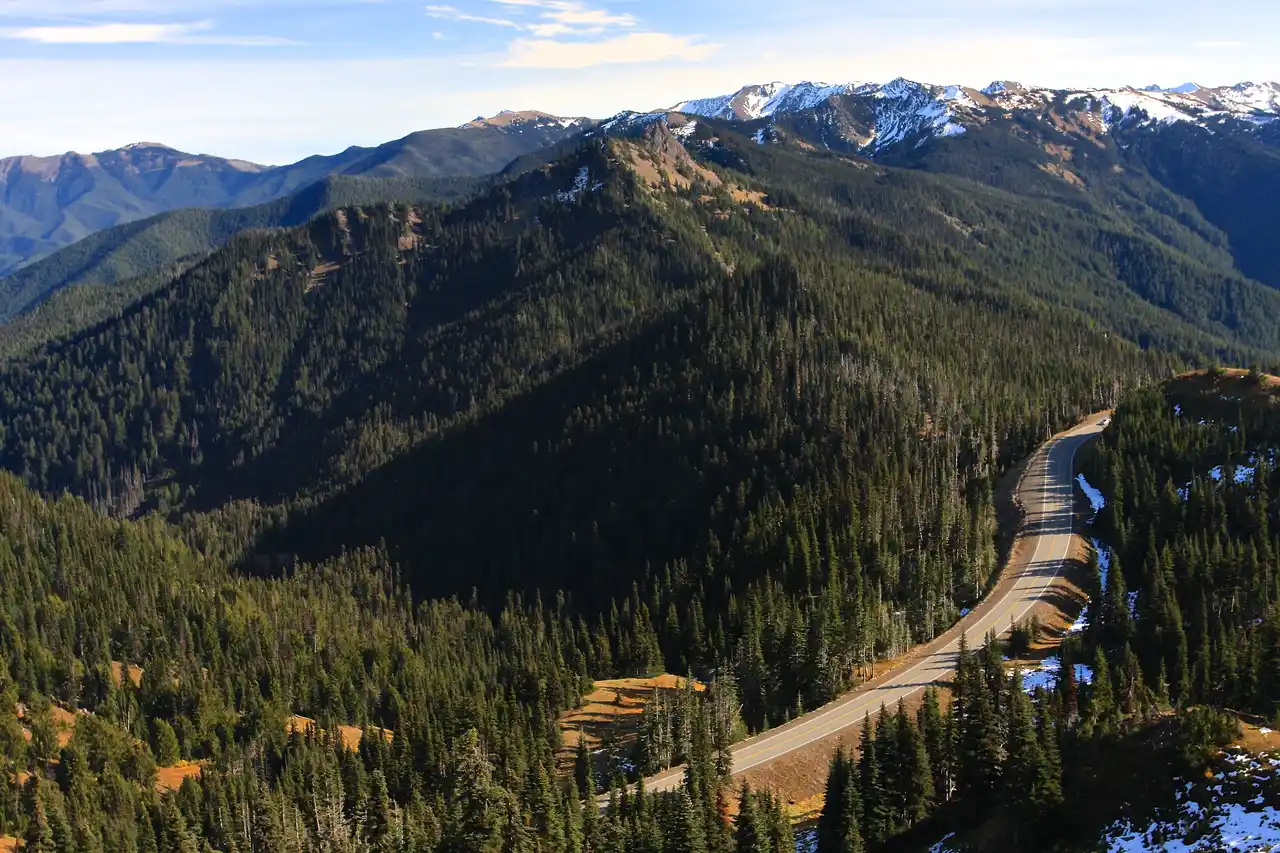
Many travelers come to Olympic National Park for its rainforests, but this diverse landscape offers much more than just moss-covered trees. From the rugged Pacific coastline to the snow-capped Olympic Mountains, the park encompasses three distinct ecosystems within its boundaries. Visitors can watch Roosevelt elk roam through meadows, spot gray whales from the shore during migration season, or trek through the Hoh Rain Forest where trees drip with hanging moss. While summer brings clear hiking trails and comfortable camping conditions, winter transforms the Hurricane Ridge area into a wonderland for skiing and snowshoeing, making Olympic a year-round destination for outdoor enthusiasts.
Bryce Canyon National Park, Utah

Known for its unique rock formations called “hoodoos,” Bryce Canyon National Park draws visitors who want to see these orange-tinted limestone spires that rise from the ground like natural skyscrapers. While many come for the sunrise views at Inspiration Point, the park offers much more than just morning photo opportunities. The area features 18 miles of hiking trails that wind through pine forests and rocky canyons, plus a scenic drive with 13 viewpoints perfect for taking in the otherworldly landscape. In winter, the park transforms into a snowy wonderland where visitors can explore on cross-country skis or snowshoes, while summer brings cool evenings ideal for stargazing programs led by park rangers.
Arches National Park, Utah
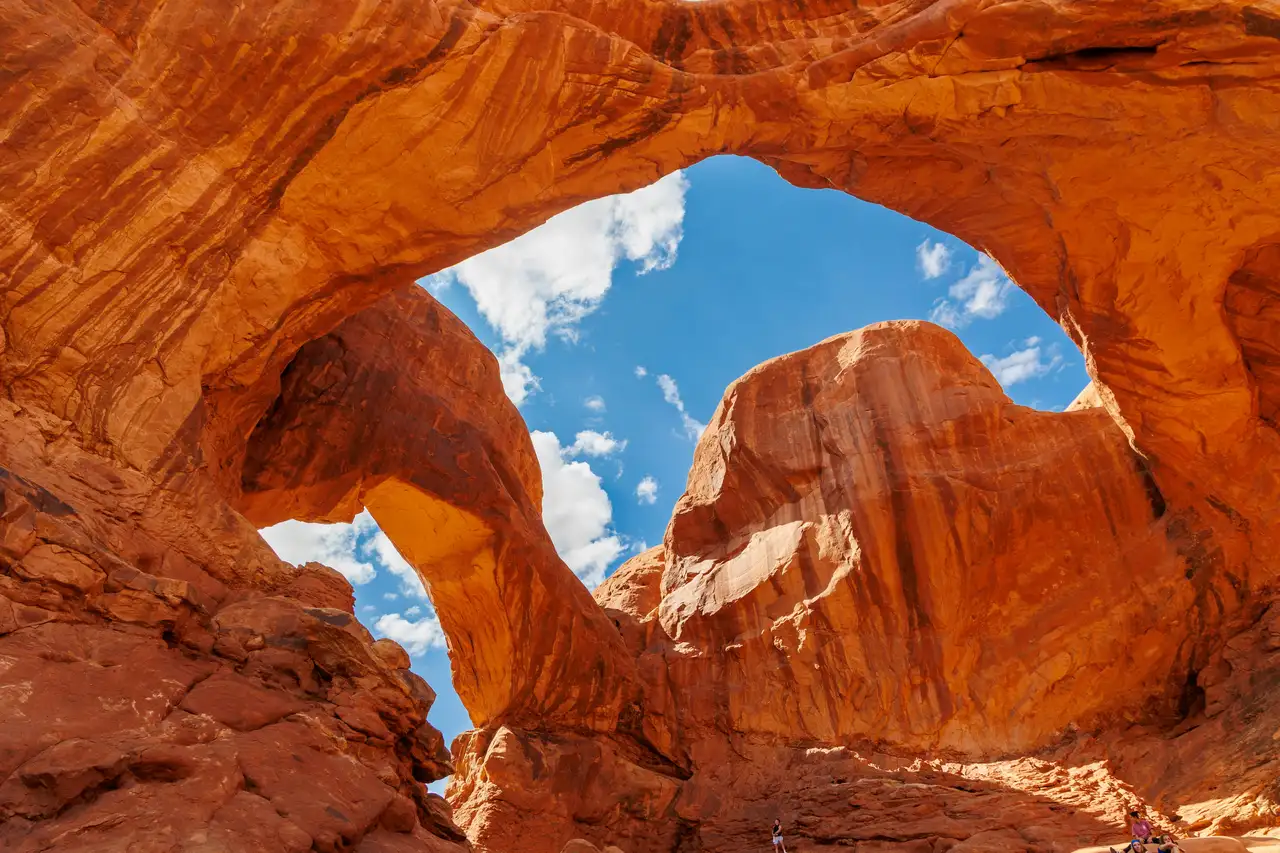
Marvel at over 2,000 natural stone arches scattered across Utah’s red rock wonderland at Arches National Park. The park’s most famous landmark, Delicate Arch, stands 65 feet tall and has become an icon of the American Southwest. Take a scenic drive through the park to spots like the Windows Section, where you can see multiple arches within a short walking distance, or hike the 3-mile Devils Garden Trail to discover seven impressive arch formations. For the best photos, visit during sunrise or sunset when the sandstone glows in warm golden light.
Sequoia National Park, California
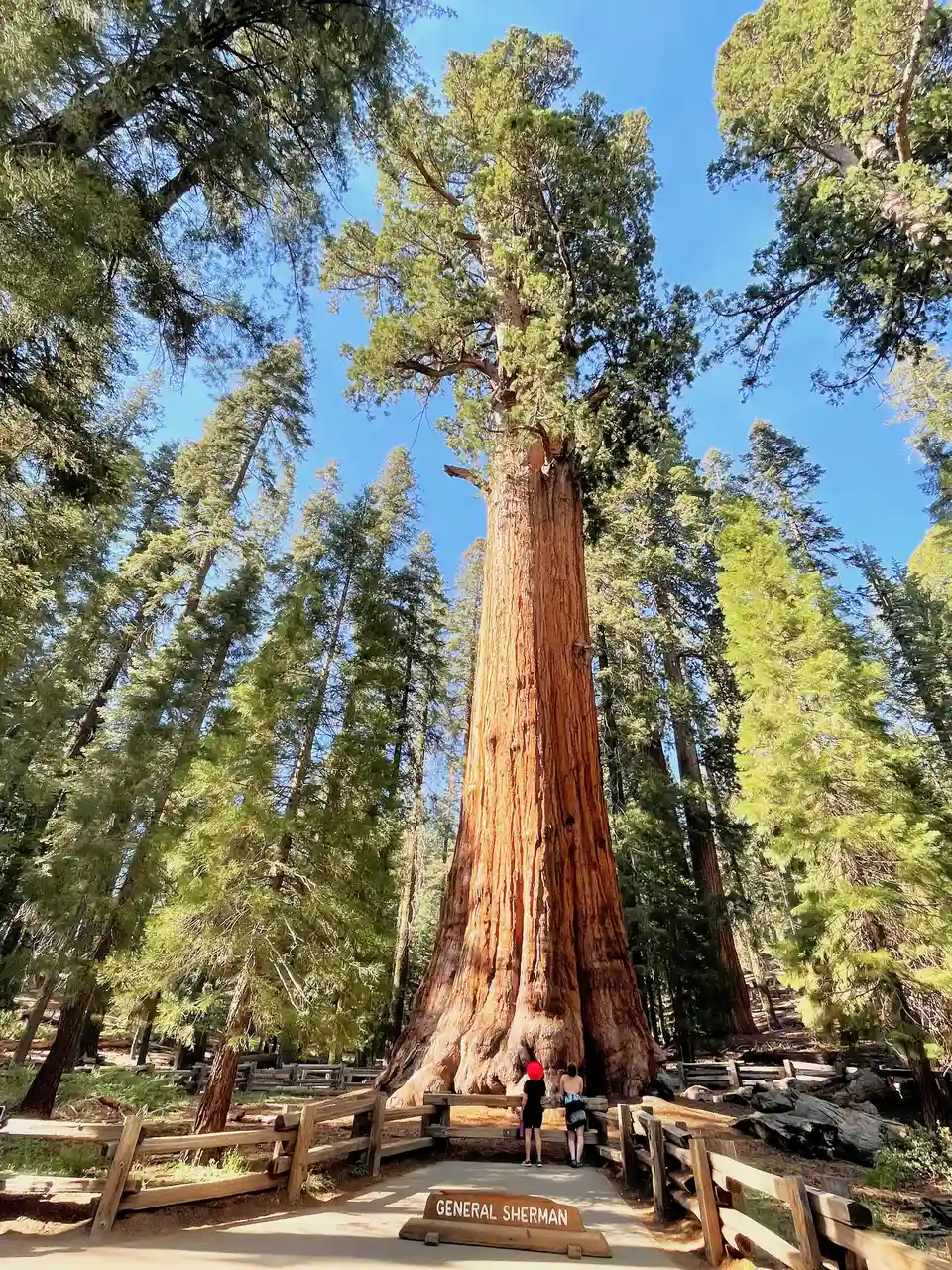
Stand among ancient giants in California’s Sequoia National Park, home to some of the largest trees on Earth. The park’s crown jewel is General Sherman, the biggest tree by volume in the world – picture a living thing as tall as a 26-story building. Take the Congress Trail for a 2-mile loop that winds through groves of these massive sequoias, or head to Moro Rock for views that stretch across the Sierra Nevada mountains. During winter months, you can even go snowshoeing among these towering trees, creating an experience that feels like stepping into a real-life fairy tale.
Grand Teton National Park, Wyoming
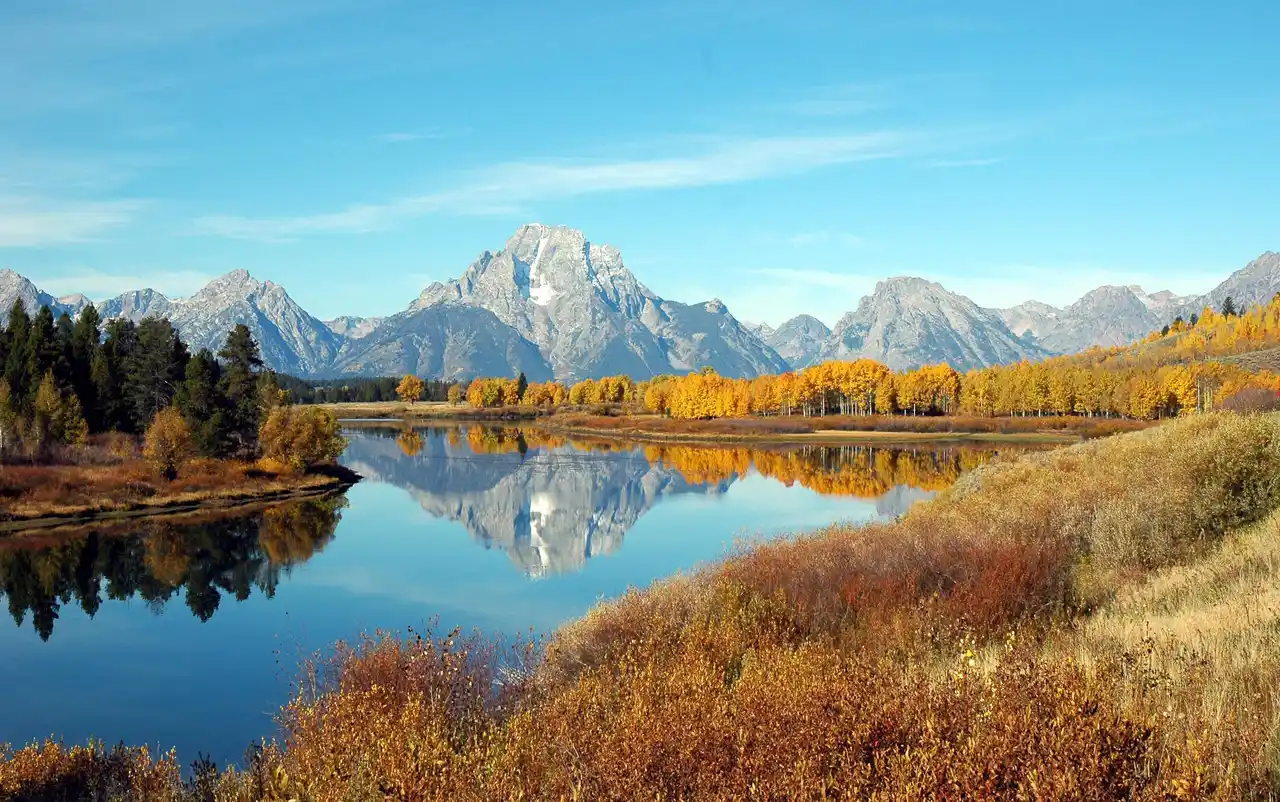
Rising dramatically from the plains of Wyoming, Grand Teton National Park first caught my eye during a cross-country road trip in 2015. The jagged peaks of the Teton Range dominate the landscape, their snow-capped summits reaching nearly 14,000 feet into the blue Wyoming sky. Crystal-clear alpine lakes mirror the mountains above, while herds of bison and elk roam freely through the sage-filled valleys below. What makes this park special is how the mountains seem to burst straight up from the earth – there are no foothills to gradually ease you into their presence. The Snake River winds through the park’s meadows, creating perfect spots for fly fishing and wildlife watching, while the historic Mormon Row barns provide photographers with some of the most iconic shots in the American West.
Shenandoah National Park, Virginia
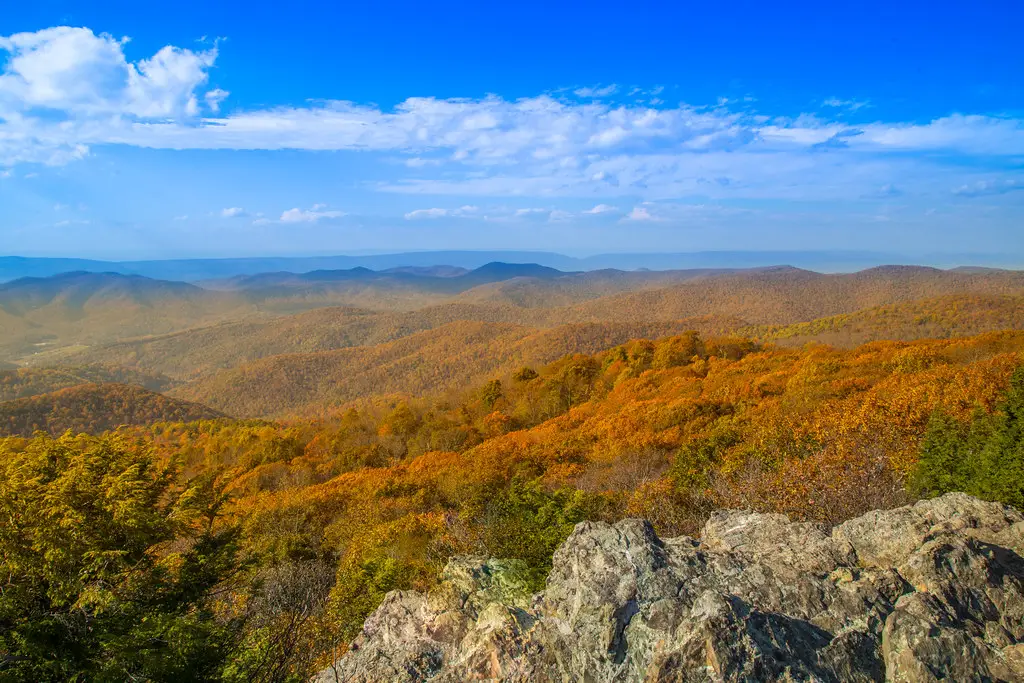
Just a 75-mile drive from Washington D.C., Shenandoah National Park feels like a world away from the bustle of the capital. As you cruise along Skyline Drive, the park’s main road, you’ll weave through the rolling Blue Ridge Mountains, passing dense forests and open meadows that change colors with each season. The park is a haven for black bears and white-tailed deer, which you might spot from one of the 75 scenic overlooks dotting the route. Because of its location along the Appalachian Trail, many long-distance hikers pass through here, but you’ll also find plenty of day-trippers exploring the park’s 500 miles of trails, including the popular route to Old Rag Mountain. Thanks to its long history as a refuge for city dwellers, the park has kept much of its rustic charm, with historic lodges and campgrounds that have welcomed visitors since the 1930s.
Mesa Verde National Park, Colorado
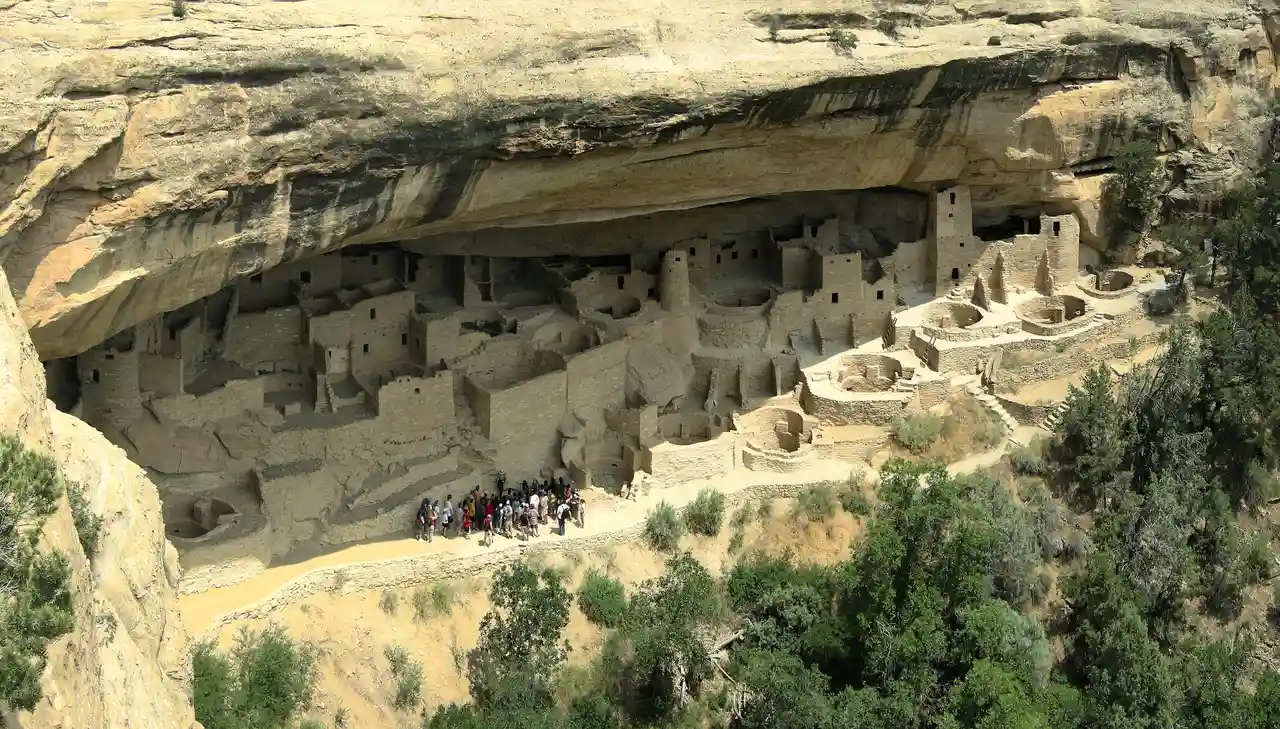
Of all the national parks I’ve explored in the Southwest, Mesa Verde stands apart as a window into ancient human history. This Colorado treasure preserves over 5,000 known archaeological sites, including some of the best-preserved cliff dwellings in North America, built by the Ancestral Pueblo people nearly 1,000 years ago. The park’s network of trails leads you through these remarkable stone villages tucked into canyon walls, where you can climb ladders into actual rooms where families once lived and worked. It’s not just about the architecture – visitors can spot wild horses roaming the mesas, watch golden eagles soar overhead, and learn how ancient farmers managed to grow crops in this challenging landscape.
Denali National Park, Alaska

Among all the national parks I’ve explored in America, Denali stands in a class of its own. This massive 6-million-acre wilderness in Alaska centers around North America’s tallest peak, where snow-capped mountains stretch as far as the eye can see. The park’s single 92-mile road takes visitors deep into the Alaskan backcountry, offering frequent sightings of grizzly bears, moose, and caribou against a backdrop of tundra and taiga forest. It’s not your typical drive-through park experience – most visitors need to hop on park buses to venture beyond mile 15 – but those who make the journey often catch glimpses of the mountain itself emerging from the clouds, a sight that leaves even seasoned travelers searching for words.
Crater Lake National Park, Oregon
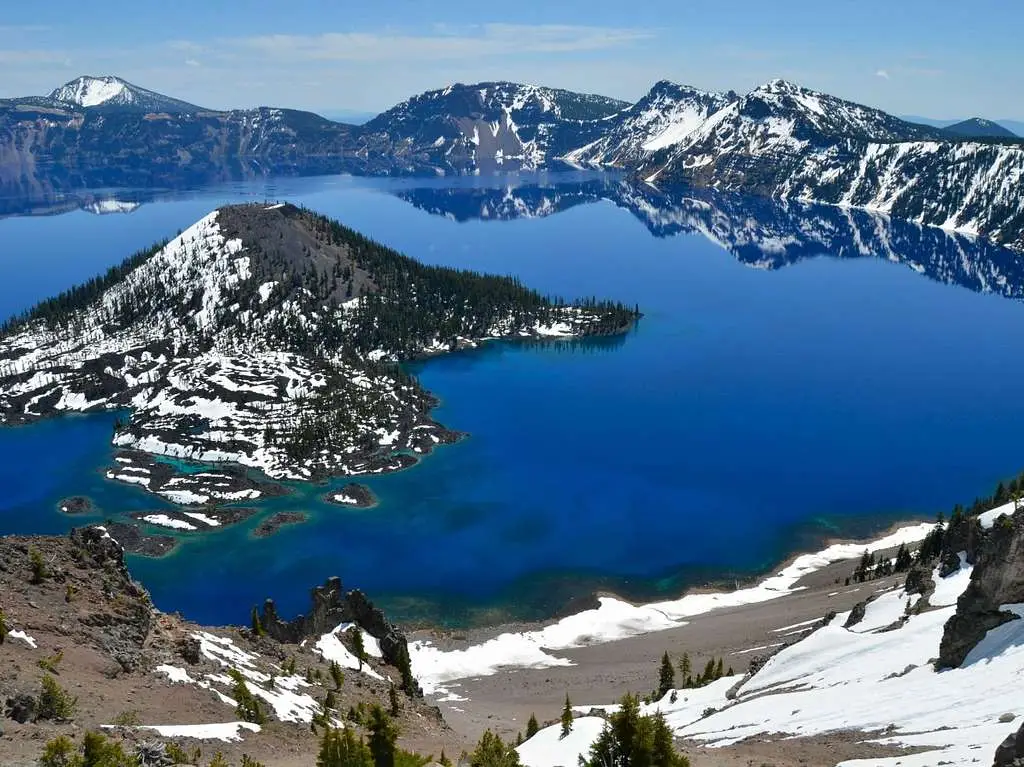
I always recommend seeing Crater Lake in Oregon to anyone looking for a unique natural wonder. Formed over 7,700 years ago when a volcanic eruption caused Mount Mazama to collapse, this deep blue lake sits like a precious jewel in a massive crater. At 1,943 feet deep, it’s the deepest lake in the United States, and its crystal-clear waters reflect the surrounding cliffs like a perfect mirror. During summer, visitors can take boat tours around the lake or hike the rim trail for different perspectives of this remarkable geological formation.
Mount Rainier National Park, Washington
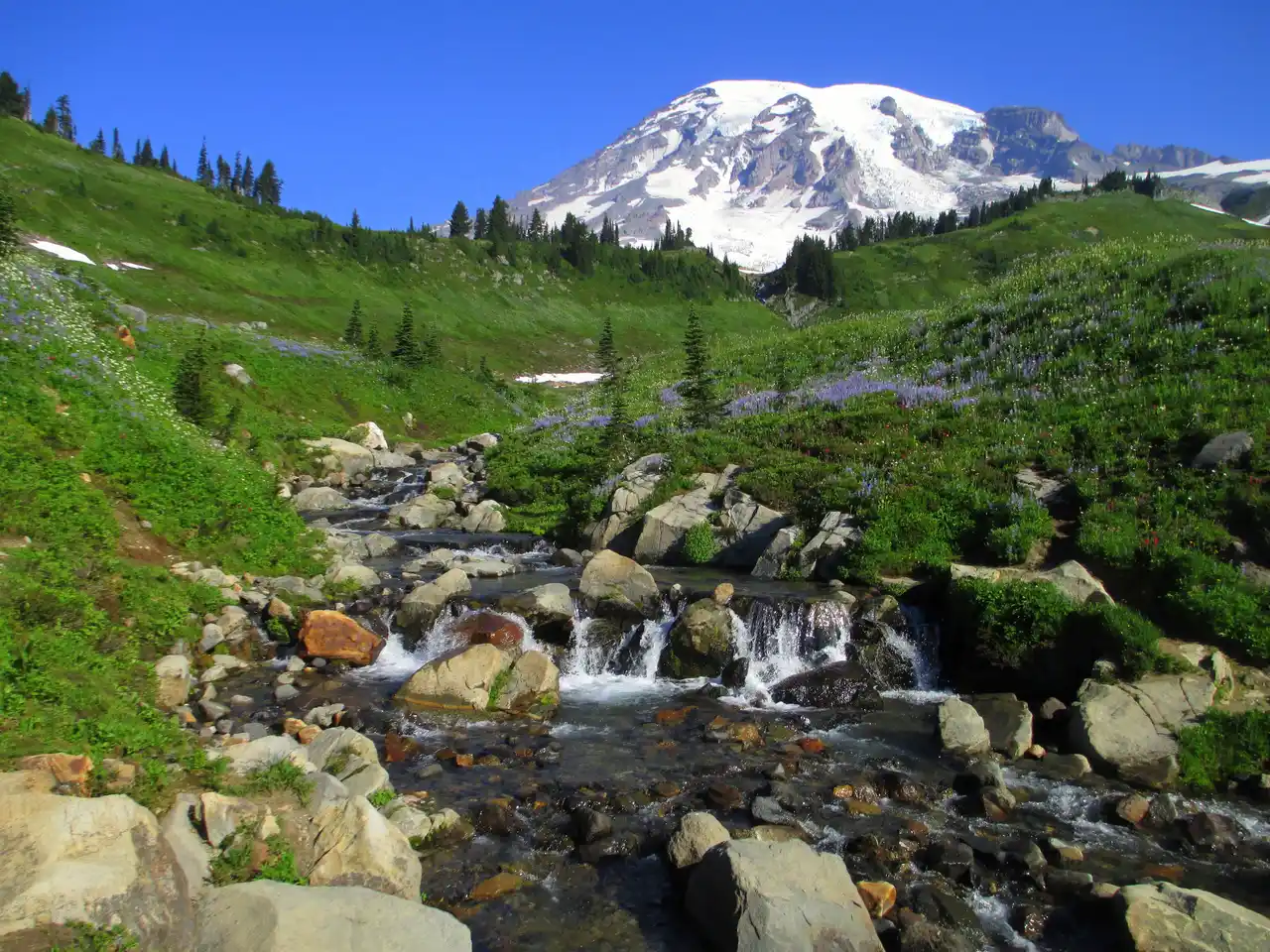
I first visited Mount Rainier National Park on a crisp autumn morning in 2018. Rising 14,411 feet above Washington state, this active volcano commands attention as the tallest peak in the Cascade Range. Old-growth forests blanket the lower slopes, while meadows of wildflowers paint the subalpine regions in summer colors. The park’s network of trails winds through glacial valleys and past tumbling waterfalls, leading hikers to viewpoints where the mountain seems close enough to touch. Paradise, the park’s most popular area, lives up to its name with miles of hiking trails and the historic Paradise Inn, where visitors have gathered since 1916 to watch alpenglow paint the mountain’s snow-covered peak in soft pink hues.

